News Detail
Latest News
- Foster + Partners' Completes Long-Awaited Renovation of Transamerica Pyramid in San Fransisco, United States
- Gloria Jean’s Cafe
- Koohravan Villa
- ind-apex Innovation Center
- Heatherwick Studio Reimagines Seoul's Hanhwa Shopping Mall in South Korea
- Didar foodhall
- RSHP Wins Competition for Convention Center and Hotel Complex in Zhengzhou, China
- A Decade of Redefining Experience Retail: 15 Apple Stores Designed by Foster + Partners in City Centers
- Populous Unveils Design for a New Stadium for A.S. Roma in Italy
- Pomme garden
Oculus World Trade Center Transportation Hub, NYC
The Oculus World Trade Center Transportation Hub, completed in 2016, serves 250,000 Port Authority Trans-Hudson (PATH) daily commuters and millions of annual visitors from around the world. At approximately 74,000 sqm, the Hub, designed by Santiago Calatrava, is the third-largest transportation center in New York City. Located immediately to the east of the original World Trade Center Twin Towers, the project replaces the original PATH rail system that was destroyed on September 11, 2001.
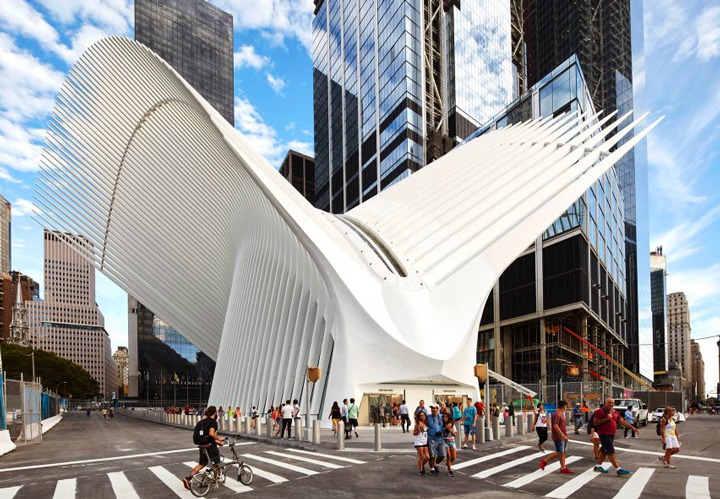

The 'Oculus' is comprised of steel ribs and glass arrayed in a large elliptical shape. The ribs extend to create two canopies over the north and south portions of the plaza. The combination of natural light and sculptural form give dignity and beauty to the building's lower levels and pedestrian walkways, and provide New York City with a kind of public space it has not previously enjoyed.
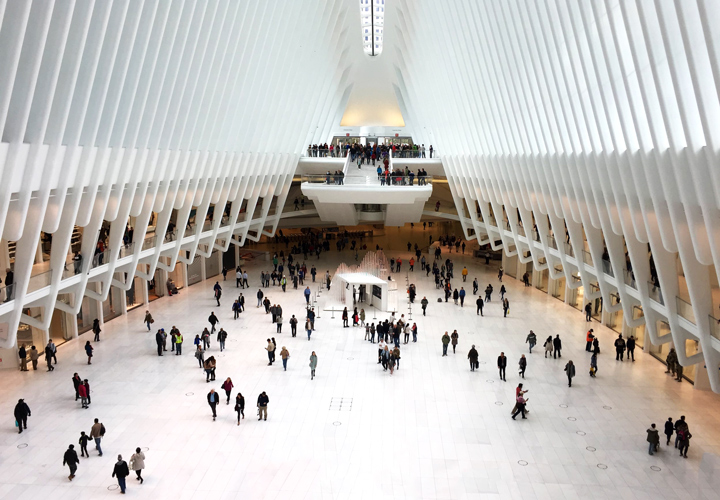

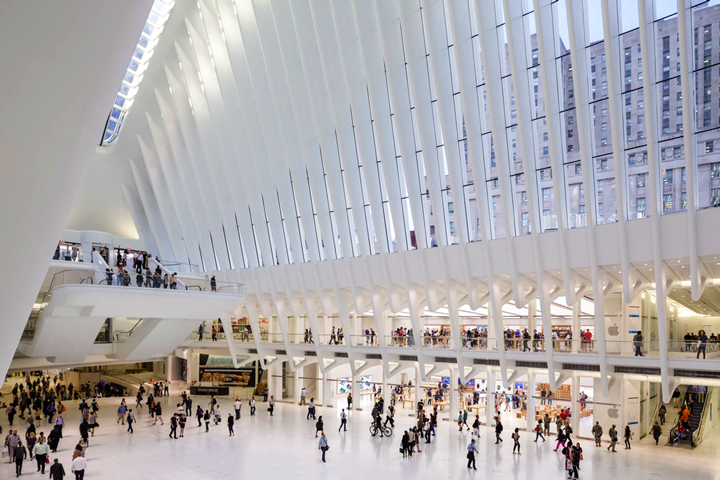
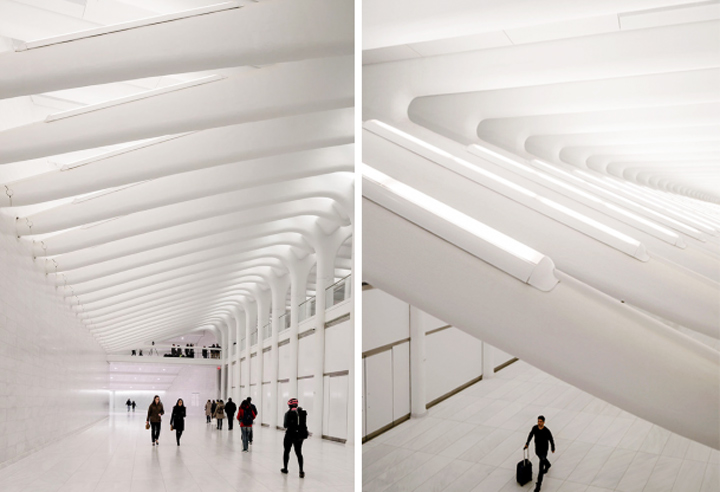
The form of building allows natural daylight to flood into the WTC Transportation Hub; filtering down through all levels eventually to the PATH train platform, approximately 18 meters below the street. At night, the illuminated building will serve as a lantern in its neighborhood.
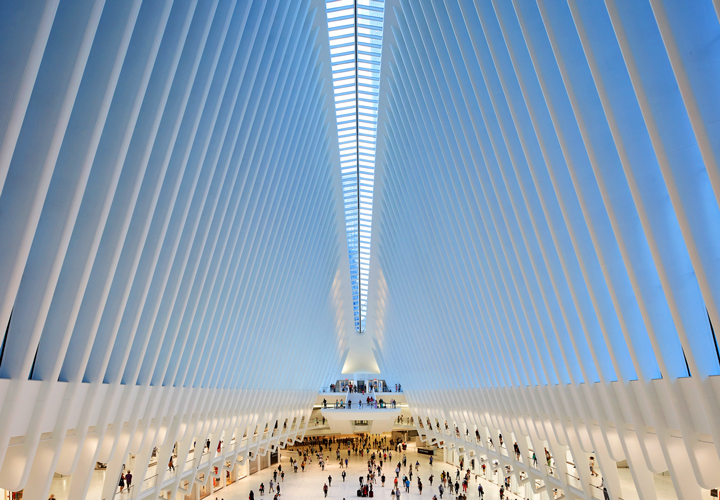
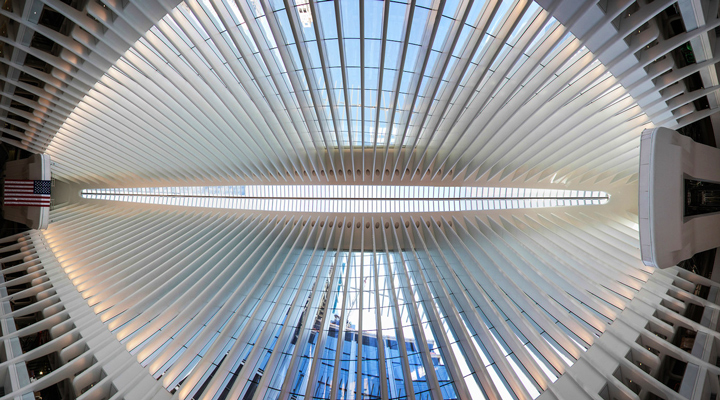
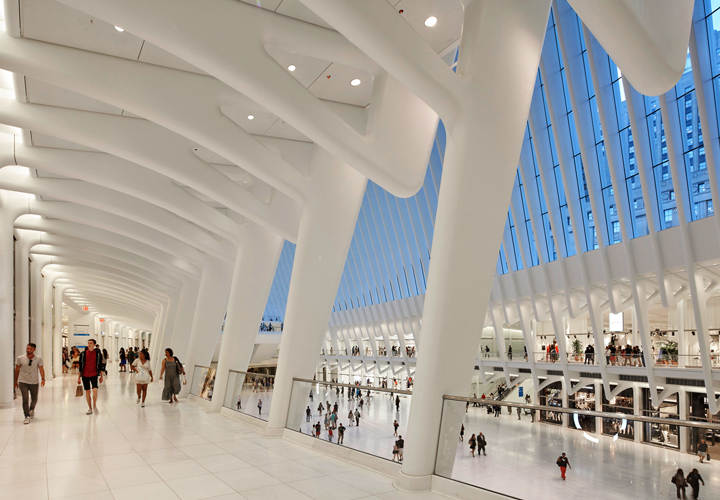
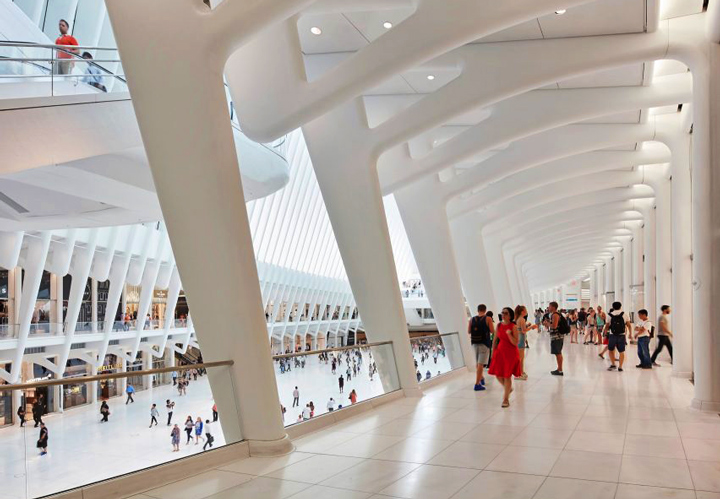

The “Oculus” serves as the centerpiece of the World Trade Center Transportation Hub, incorporating 7200 square meters of multi-level retail and dining. With an additional 27,000 square meters of exciting, multi-level retail and dining space, the World Trade Center site is the focal point of Lower Manhattan.
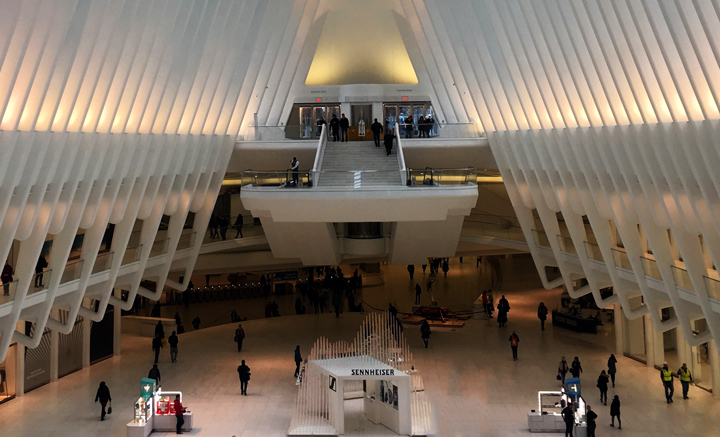
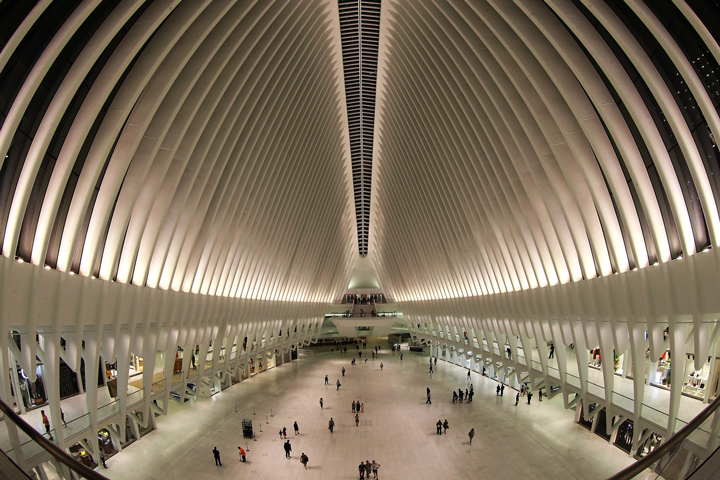
The Oculus WTC has won numerous awards; SARA Special Design Award of Excellence in Urban Infrastructure, Design of the Year (2016), etc.
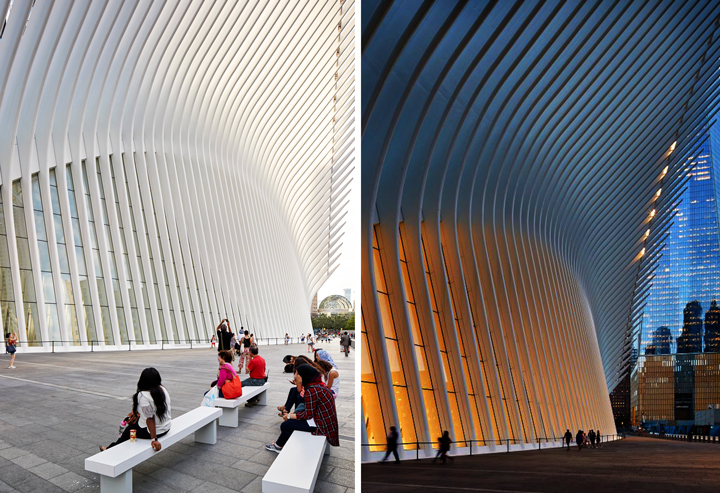
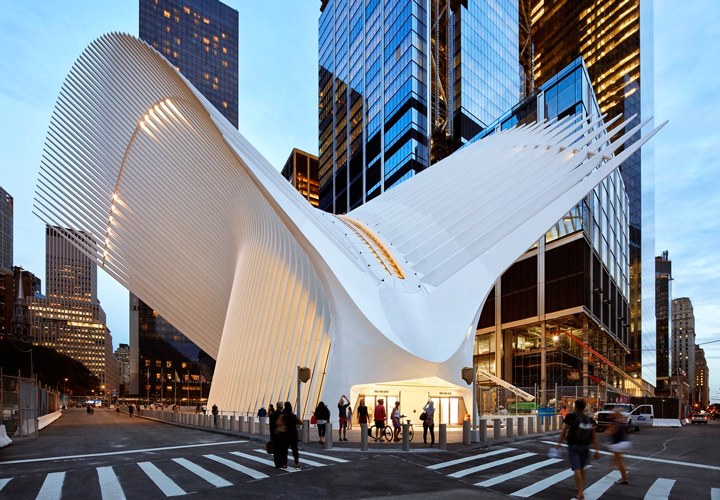
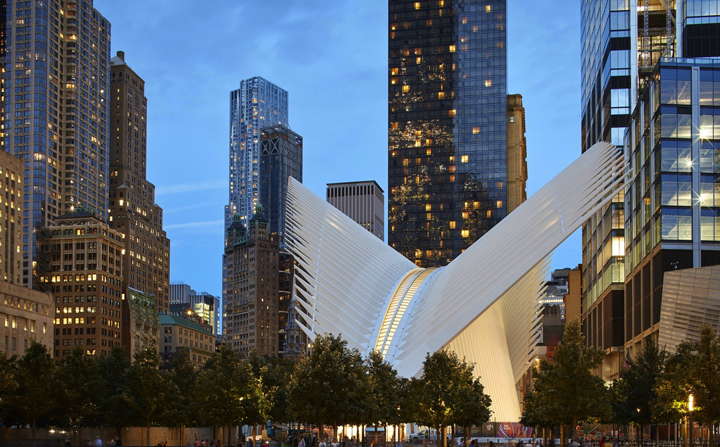

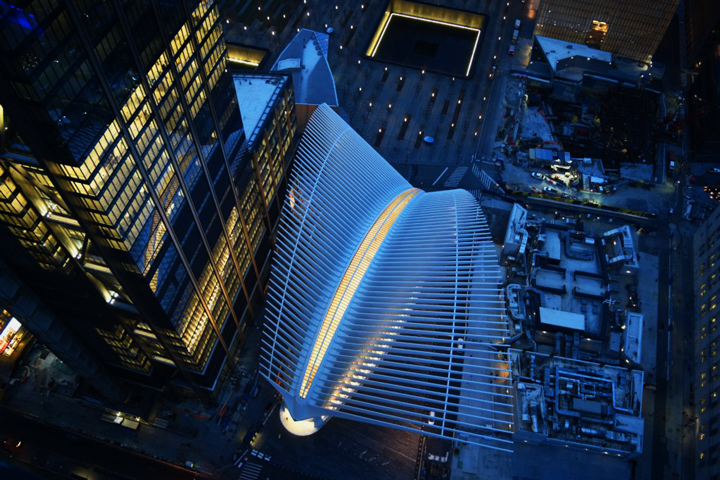
References:
